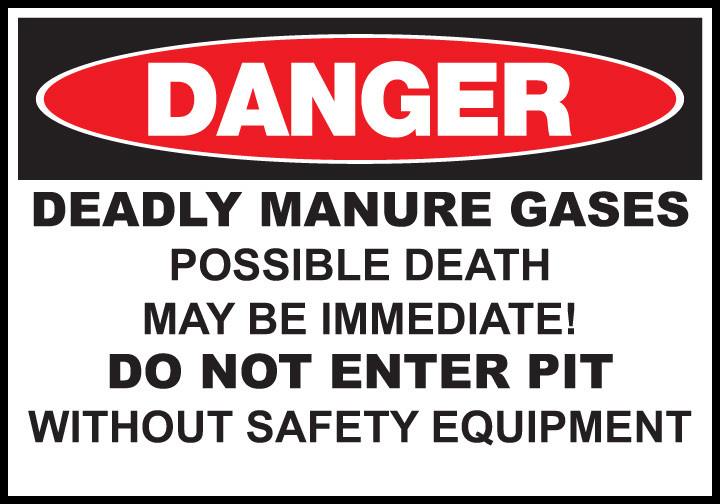Manure pits are changeable and unpredictable. This is the time of year that we need to be assessing the dangers of working in manure pits and brush up on our knowledge of hazardous gases. During late summer and fall there is increased risk as producers are emptying pits, so it's very important that everyone who works in or around manure storage (tanks, pits, and lagoons) understands how to identify hazardous gases and the proper procedures for working in them.

The four main gases produced from decomposing manure are: hydrogen sulfide, methane, ammonia and carbon dioxide. When pits are agitated for pumping, some or all of these gases are rapidly released from the manure and may reach toxic levels or displace oxygen, increasing the risk to humans and livestock.
Don't Get Too Comfortable!
You may have been safe in the past while working around manure pits, but that doesn't mean you can grow complacent. Factors like wind conditions, the stage of manure decomposition, and other issues are always changing and can create an environment for deadly concentrations of toxic gases to be released. You should treat a manure pit as if it is a deadly environment, particularly because some gases may not be detected by smell, especially when they're in high concentrations. Put a “monitoring plan” in place so you can safely monitor and evaluate the air quality and before entering whatever manure storage you have.
Hydrogen Sulfide (H₂S) Methane (CH₄)
Even though people can't smell hazardous concentrations of hydrogen sulfide and methane, the concentrations may be high enough to decrease oxygen and paralyze breathing. Monitors for measuring gas concentrations are available and should be used prior to entry into any manure storage area. The best monitor is a multi-gas monitor with sensors for oxygen, hydrogen sulfide, methane or explosion. These monitors are relatively inexpensive and can save the life of you, a family member, or an employee.
Remember
Every year people die due to carelessness while handling manure and working around manure storage areas. Too often family members are lost because they try to rescue someone that has been overcome by these dangerous gases.
1. Train anyone who works around manure storage areas.
2. Be prepared and thoroughly understand the dangers of these gases.
3. Do not enter manure storage areas without running mechanical ventilation during pumping and
constantly measuring gas concentrations—even if you never go into the building or storage area.
For more information, Great Plains Center for Agricultural Health is a great place to start. They have access to many publications about manure gas safety that include information about each of the gases, their hazards, developing a plan, as well as monitoring information.



